Introduction
Within This Page
Heating, ventilating, and air-conditioning (HVAC) systems account for nearly 40% of the energy used in commercial buildings in the United States. Consequently, almost any business or government agency has the potential to realize significant savings by improving its control of HVAC operations and improving the efficiency of the system it uses. There are also considerable opportunities for significant energy savings through efficient, integrated design, especially at the building envelope.
An integrated and efficient building envelope with appropriate window and glazing design can not only reduce the energy and operating costs of a facility, but can also reduce the size and cost of the HVAC system needed to maintain adequate building pressurization, good indoor air quality and a comfortable thermal environment for building occupants.
An often overlooked component of the building envelope is the relationship of the roofing system with the large HVAC equipment that is often mounted on the roof. The integrated design process can provide the means to facilitate early consideration of wind loading, vibration, blast and seismic considerations pertaining to rooftop HVAC equipment.
Description
The term HVAC refers to the three disciplines of Heating, Ventilating, and Air-Conditioning. A fourth discipline, Controls, pervades the entire HVAC field. Controls determine how HVAC systems operate to meet the design goals of comfort, safety, and cost-effective operation.
Heating can be accomplished by heating the air within a space (e.g. supply air systems, perimeter fin-tube "radiators"), or by heating the occupants directly by radiation (e.g. floor/ceiling/wall radiation or radiant panels).
Ventilating maintains an adequate mixture of gases in the air we breath (e.g. not too much CO2), controls odors, and removes contaminants from occupied spaces. "Clean" air helps keep occupants healthy and productive. Ventilation can be accomplished passively through natural ventilation, or actively through mechanical distribution systems powered by fans.
Air-conditioning refers to the sensible and latent cooling of air. Sensible cooling involves the control of air temperature while latent cooling involves the control of air humidity. Room air is cooled by transferring heat between spaces, such as with a water loop heat pump system, or by rejecting it to the outside air via air-cooled or water-cooled equipment. Heat can also be rejected to the ground using geothermal exchange. Cool air is not comfortable if it is too humid. Air is dehumidified by condensing its moisture on a cold surface (such as a cooling coil), or by removing the moisture through absorption (desiccant dehumidification). In dry climates, humidification may be required for comfort instead of dehumidification. Evaporative humidification also cools the air. Radiant cooling systems and mixed mode cooling applications are being used where appropriate.
Controls ensure occupant comfort, provide safe operation of the equipment, and in a modern HVAC control system enable judicious use of energy resources. HVAC systems are sized to meet heating and cooling loads that historically occur only 0.4% to 2.5% of the time. It is the function of the controls to ensure that the HVAC systems perform properly, reliably, and efficiently during all of the conditions that occur 97.5% to 99.6% of the time.
There is a critical interface at the perimeter of all buildings between the building envelope and the building's HVAC and control systems. Following are several significant issues that should be addressed when optimizing this interface:
- Integrated, Whole Building Design
- Minimize Energy Consumption at the Building Envelope
- Providing Comfortable Environments in Perimeter Areas
- Achieve Appropriate Indoor Air Quality and Building Pressurization
- Employ Measures for Safety and Security
- Consider Rooftop Equipment
Fundamentals
Following are HVAC system recommendations pertaining to the design and construction of the building envelope.
Integrated, Whole Building Design
- Use an Integrated, Whole Building Design approach for the building envelope with appropriate consideration given to optimized levels of thermal insulation; the size, location and performance of windows and glazing systems; appropriate external shading and solar control; thermal comfort; moisture control; acoustic privacy; daylighting and control; and security/safety considerations. Each of these individual parameters can impact the effectiveness of the building's HVAC system.
Minimize Energy Consumption at the Building Envelope
Consider Climate Conditions—building envelope components should be responsive and appropriate for the climate of the building. This can result in a smaller and more efficient HVAC system.
Optimize Thermal Insulation—optimize the insulation performance of the envelope opaque elements for both heating and cooling seasons. This can result in a smaller and more efficient HVAC system.
Incorporate High Performance, Spectrally Selective Glazing—the orientation, amount and performance of vertical and horizontal glazing should be appropriate for the climate of the building. Carefully analyze the thermal (U-factor), solar (solar heat gain factor – SHGF) and daylighting (visible transmittance – VT) performance of glazing on each elevation of the building. The performance criteria will vary depending upon orientation and dominant strategy (e.g. solar performance or daylighting performance). This can result in a smaller and more efficient HVAC system.
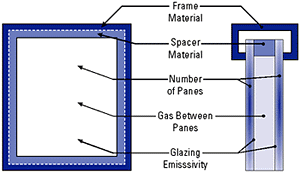
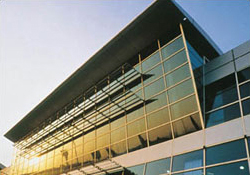
Figure 1. Factors Affecting Window Performance Courtesy of Energy User News
Figure 2. International Terminal Building in Istanbul's Ataturk Airport uses laminated glass for safety and security Courtesy of DuPont Laminated Technologies
Employ Effective Solar Shading Devices—use exterior shading devices such as overhangs, vertical fins and light shelves as energy efficiency measures (with consideration of maintenance and security/safety issues). This can result in a smaller and more efficient HVAC system.
Analyze Envelope Performance with Energy Simulation—use energy simulation and life cycle analysis tools to optimize the performance of all components of the building envelope. Make informed decisions about the components of the building envelope based on life cycle performance.

Figure 3. Flow Chart to Determine Energy Costs
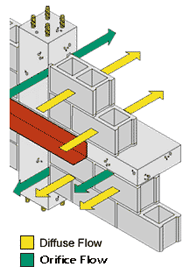
Figure 4. Air Leakage through a Building Enclosure
- Commission Envelope Elements—the building commissioning process should include commissioning of the building envelope to insure that all performance requirements are being met. Commissioning of the building envelope can identify areas of concern related to air infiltration and leakage, moisture diffusion, surface condensation, and rain water entry – all issues that can negatively impact the building's energy performance and indoor environmental quality. Of particular importance is to begin commissioning of the building envelope during design when design modifications can be easily incorporated, rather than waiting until construction when remediation can cost significantly more.
While the LEED® Green Building Rating System requires buildings to undergo Fundamental Building Commissioning of systems to achieve certification, it merely recommends that some form of building envelope commissioning be incorporated. Lemieux and Totten have proposed a Building Envelope Commissioning process that could supplement the Fundamental Building Commissioning required for LEED® certification.
Provide Comfortable Environments in Perimeter Areas
Physical Comfort—this is critical to workplace productivity and satisfaction. Uncomfortable conditions in the workplace—too hot, too cold, too noisy, too dark, too light, too much glare—restrict the ability of workers to function to full capacity and can lead to lowered job satisfaction and increases in illness symptoms. Window and glazing element location and performance should weigh the competing issues of daylighting, excessive solar heat gain, and glare. The performance characteristics of the glazing material can also impact the indoor Mean Radiant Temperature, which can directly impact occupant thermal comfort and productivity.
Use Computational Fluid Dynamics (CFD)—these modeling programs can assist in determining thermal comfort characteristics of various envelope configurations. ASHRAE Standard 55 Thermal Environmental Conditions for Human Occupancy should be used as the basis for thermal comfort.
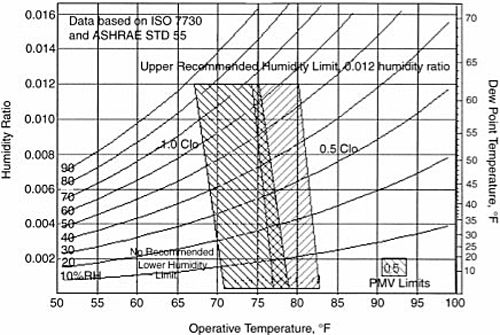
Figure 5. Courtesy ASHRAE Standard 55-2004, Thermal Environmental Conditions for Human Occupancy.
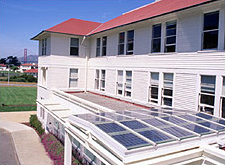
Figure 6. The Thoreau Institute of Sustainability at the Presidio, San Francisco, California
Consider Operable Windows—if operable windows are incorporated for natural ventilation and occupant control, consider the effect on the building HVAC system (integrated controls) so as not to negatively impact the building's overall energy performance.
Dedicated Outdoor Air Systems—the use of dedicated/separate outside air and conditioned air distribution systems for the building perimeter zones is now required for many federal buildings to maintain occupant thermal comfort and positive building pressurization in perimeter zones.
Achieve Appropriate Indoor Air Quality and Building Pressurization
- Account for Moisture Dynamics—the design and construction of the building envelope should give appropriate consideration to the moisture dynamics so that water is not transmitted through the building envelope in to the building construction. This can easily contributed to poor indoor air quality in any building.
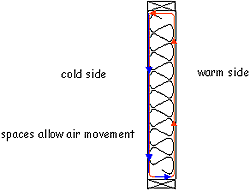
Figure 7. Convection of moist air in enclosure assemblies can cause problems.
- Dedicated Outdoor Air Systems—the use of dedicated/separate outside air and conditioned air distribution systems for the building perimeter zones is now required for many federal buildings to maintain occupant thermal comfort and positive building pressurization in perimeter zones. This can and should be supplemented through the use of pressure sensors inside and outside the building envelope as a means of controlling the dedicated perimeter systems to maintain positive building pressurization.
Employ Measures for Safety and Security
- Safety and Security—the design and construction of safe and secure buildings continues to be the primary goal for owners, architects, engineers, and project managers. However, security and safety measures must be considered within a total project context, including the project's environmental goals. Several indoor environmental quality strategies, such as dedicated ventilation systems and tight building envelopes, can be employed to help designers achieve an integrated, high performance facility.
Consider Rooftop Equipment
- Rooftop Equipment—the roof portion of the building envelope is often used as a location for the mounting of large HVAC equipment. Design of support and anchorage systems should be coordinated with the appropriate design professionals so that design requirements for wind loading, vibration, blast and seismic considerations are addressed early. Consider designing the capacity to change or add to rooftop building systems as technologies and functional needs might change.
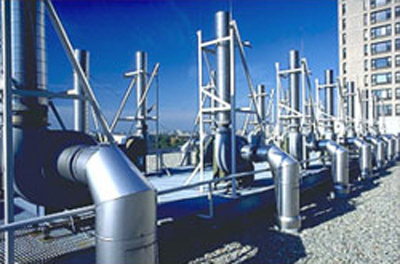
Figure 8. Example of Rooftop HVAC Equipment
Applications
The benefits of high performance, energy-efficient HVAC systems are universal. Therefore, high performance HVAC systems can be installed in all different types of buildings, including office buildings, schools, hospitals, libraries, courthouses, and research facilities. The interrelationship between the building envelope and the HVAC system continues to be a significant factor in a building's energy performance, the quality of the occupant's indoor environment, and the overall safety of the building and its occupants.
Related Issues
Balancing Security/Safety and Sustainability Objectives—Providing for sustainable designs that meet all facility requirements is often a challenge to the building design, construction and operation community. With limited resources it is not always feasible to provide for the most secure facility, the most architecturally expressive design, or energy efficient building envelope. From the concept stage through the development of construction documents, it is important that all project or design stakeholders work cooperatively to ensure a balanced design. Successful designs must consider all competing design objectives.
Integrated Design—Designers are moving away from the conventional building design approach that has historically resulted in little interaction between all parties involved in the project. There is a movement to embrace integrated building design, fostering communication amongst all parties that could be involved in the project, and facilitating working together from the start to coordinate and optimize the design of the site and the building.
Emerging Issues
Building Information Modeling (BIM)
Relevant Codes and Standards
Federal Mandates
Standards and Guidelines
- ASHRAE Standard 62.1 Ventilation for Acceptable Indoor Air Quality
- ANSI/ASHRAE/IES Standard 90.1 Energy Standard for Buildings Except Low-Rise Residential Buildings
- ASHRAE Guideline 1.1 HVAC&R Technical Requirements for The Commissioning Process
- PBS-P100 Facilities Standards for the Public Buildings Service, General Services Administration
Additional Resources
Federal Agencies
- Department of Energy (DOE)
- Federal Energy Management Program (FEMP)—Information on Energy Technologies
- Office of Energy Efficiency and Renewable Energy (EERE)
- Energy Information Administration (EIA)
- Environmental Protection Agency (EPA) Energy Star Program
- National Institute of Standards and Technology (NIST)
- U.S. EPA Atmospheric Pollution
National Laboratories and Research Centers
- Lawrence Berkeley National Laboratories (LBNL)
- National Renewable Energy Laboratory (NREL)
- Oak Ridge National Laboratory (ORNL)
- Pacific Northwest National Laboratory (PNNL)
Publications
- ACHRNEWS—Air-Conditioning, Heating and Refrigeration News
- American Society of Heating, Refrigeration and Air-Conditioning Engineers (ASHRAE) Journal
- Building Technology: Mechanical and Electrical Systems, 2nd Edition by Stein, Benjamin. New York: John Wiley & Sons, Inc., 1997.
- Consulting-Specifying Engineer
- Energy-Efficient Design and Construction for Commercial Buildings, by Steven Winter Associates, Inc. New York: McGraw-Hill, 1997.
- Energy-Efficient Operation of Commercial Buildings: Redefining the Energy Manager's Job by Peter Herzog. New York: McGraw-Hill, 1997.
- Energy User News
- Engineered Systems Magazine
- Heating/Piping/Air-Conditioning HPAC Engineering Magazine
- Simplified Design of HVAC Systems, by Bobenhausen, William. New York: John Wiley & Sons, Inc., 1994.
Organizations
- Air-Conditioning and Refrigeration Institute (ARI)
- American Boiler Manufacturers Association (ABMA)
- American Society of Heating, Refrigeration and Air-Conditioning Engineers (ASHRAE)
- American Society of Mechanical Engineers (ASME)
- Association of Energy Engineers (AEE)
- Cooling Technology Institute (CTI)
- Electric Power Research Institute (EPRI)
- Geothermal Resources Council (GRC)
- International Ground Source Heat Pump Association (IGSHPA)
- International Energy Agency (IEA) Heat Pumping Technologies Centre
- Sheet Metal and Air Conditioning Contractors' National Association (SMACNA)










